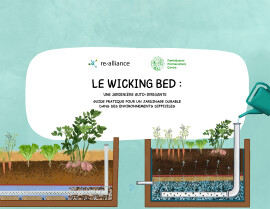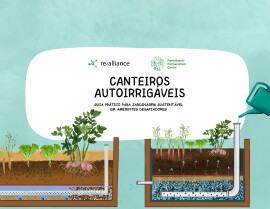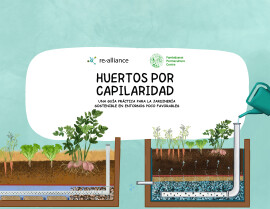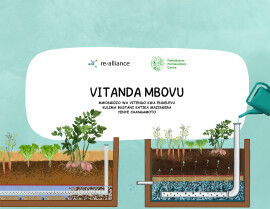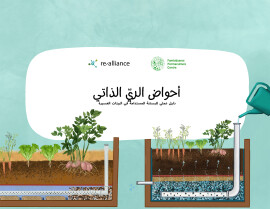
Pastoral Development Planning
Written for planners and managers in development and relief agencies, Oxfam Development Guidelines draw on Oxfam's experience to review current thinking on theory and practice in a range of development and relief fields. Despite all the efforts of development agencies, pastoral communities in Africa are no less vulnerable to drought, famine and environmental degradation than they were forty years ago. Development agencies working with pastoralists have concentrated on technical programmes to combat threats such as drought, famine, and environmental degradation. Julian Prior argues that their initiatives would be more relevant and sustainable if they were supported by social development which strengthened the institutional capacity of pastoral communities. Improved technologies should make a positive contribution to the security of pastoral peoples: food security, political security and security of rights to land and water. Community development planners, for whom this book is written, have a major role to play in this process.
Published: 1994
Pages: 160
eBook: 9780855988166
Paperback: 9780855982041
| * List of figures and tables | |||
|---|---|---|---|
| * Preface | |||
| * Acknowledgements | |||
| 1. Introduction | |||
| 2. The forces of change: redefining the problem of pastoral development | |||
| 3. A critical review of the history of pastoral development projects | |||
| 4. Case study: the Erigavo Erosion Control and Range Management Project | |||
| 5. The development approach of the Erigavo Project | |||
| 6. Rangeland management and the Erigavo Project | |||
| 7. Identifying an appropriate model for pastoral development | |||
| 8. Conclusions: changing policy directions | |||
| * Notes | |||
| * References | |||
| * Index. |
Julian Prior
Julian Prior was Oxfam's Project Manager on the Erigavo Project until the outbreak of the Somali civil war. He now works in Australia for the NSW Department of Conservation and Land Management.
La santé des pasteurs mobiles auSahel – Bilan de 15 années de recherches et développement
Montavon, A.
Jean‐Richard, V.
Bechir, M.
Daugla, D. M.
Abdoulaye, M.
Bongo Naré, R. N.
Diguimbaye‐Djaibé, C.
Alfaroukh, I. O.
Schelling, E.
Wyss, K.
Tanner, M.
Zinsstag, J.
Tropical Medicine & International Health, Vol. 18 (2013), Iss. 9
https://doi.org/10.1111/tmi.12148 [Citations: 2]Health of mobile pastoralists in theSahel – assessment of 15 years of research and development
Montavon, A.
Jean‐Richard, V.
Bechir, M.
Daugla, D. M.
Abdoulaye, M.
Bongo Naré, R. N.
Diguimbaye‐Djaibé, C.
Alfarouk, I. O.
Schelling, E.
Wyss, K.
Tanner, M.
Zinsstag, J.
Tropical Medicine & International Health, Vol. 18 (2013), Iss. 9 P.1044
https://doi.org/10.1111/tmi.12147 [Citations: 48]Observations on the Clinical Examination of the Camel (Camelus dromedarius) in the Field
Tefera, M.
Tropical Animal Health and Production, Vol. 36 (2004), Iss. 5 P.435
https://doi.org/10.1023/B:TROP.0000035006.37928.cf [Citations: 12]Prevalence of Camel Mange and Associated Risk Factors in The Banadir Region, Somalia
Mohamed, Moktar Omar Sheikh
Mio, Jeilani Buzuri
Abdullahi, Abdullahi Abdirashid
Adow, Ilyaas Abukar
Derow, Mahad Abdinur
Journal of Applied Veterinary Science And Technology, Vol. 5 (2024), Iss. 2 P.146
https://doi.org/10.20473/javest.V5.I2.2024.146-151 [Citations: 0]Mapping the spatial distribution of soil depth in a grassland ecosystem with the aid of ground penetrating radar andGIS(Northwestern Sichuan, China)
Zhang, Xuelian
Dao, Ligang
Zhang, Chaosheng
Morrison, Liam
Hong, Bing
Zhang, Hongxuan
Gan, Youmin
Grassland Science, Vol. 64 (2018), Iss. 4 P.217
https://doi.org/10.1111/grs.12201 [Citations: 8]Development Agents And Nomadic Agency : Four Perspectives in the Development “Market”
Greenough, Karen Marie
NAPA Bulletin, Vol. 27 (2007), Iss. 1 P.110
https://doi.org/10.1525/napa.2007.27.1.110 [Citations: 2]Policy, environment and development in African rangelands
Homewood, Katherine M.
Environmental Science & Policy, Vol. 7 (2004), Iss. 3 P.125
https://doi.org/10.1016/j.envsci.2003.12.006 [Citations: 74]
